Across the Border Again: The Booze Run
“I arrived at the crossing, offered up our US passports; mine including a large, full-page Serbian residence permit. I was speaking Serbian, which is, of course, the same language as Croatian, and I was speaking it with plenty of grammatical and usage errors. But I was not speaking Croatian, with its extra ‘j’s’ pronounced ‘yia’; obvious clues that I still lived in Serbia, beyond my residence permit. My Greek-registered car, which I explain with my Greek passport, confirmed that I was Orthodox, like the Serbs, and pro-Serbian.”—Alexander Billinis
Roaming East Roman
By Alexander Billinis
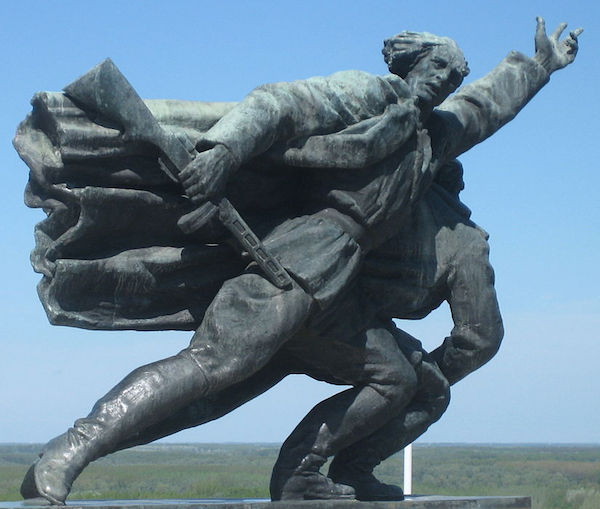
 CHICAGO Illinois—(Weekly Hubris)—10/19/2015—It was not my first cross-border booze run, not even close.
CHICAGO Illinois—(Weekly Hubris)—10/19/2015—It was not my first cross-border booze run, not even close.
My first encounter with cross-jurisdictional alcohol purchases dates from the 1970s, a dozen years before I could drink, accompanying my father from our Utah home across the border into Wyoming, where spirits were more plentiful and cheaper. Utah highway patrolmen, knowing this, often would lie in wait on our side of the border.
By the time I went off to college in Washington DC, in the late 1980s, all jurisdictions had changed the legal age to 21, so I never got to arbitrage the drinking ages, but my friends and I still applied the principles of economics and taxation differentials to choose the appropriate lower-cost jurisdiction for our booze purchases, particularly when fraternity functions required volume purchases.
In the first part of this second decade of the second millennium, fate again found me living within easy driving distance of two other jurisdictions. My family then lived in Serbia, in Sombor, the northwesternmost part of the country, 20-odd kilometers from both the Croatian and the Hungarian borders. We crossed both borders frequently, usually for shopping or, in the case of Croatia, on our way to the delights of the Adriatic Coast.
On one particular morning, in the early fall, as foliage was just starting to change, my wife left by bicycle for her project management job, my son trudged off to the third grade, and my daughter had just finished breakfast. “We’re going abroad,” I called out to my wife.
“Where today?” she asked.
“Croatia, I need to buy some homemade wine.”
I could, of course, imagine her eye rolling at my perceived need, but I quickly gathered the necessities: a change of clothes for my toddler, car documents, a fistful of Croatian Kuna, passports . . . and we were off.
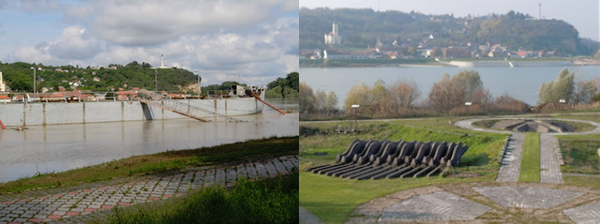
It was a mid-week morning, and traffic, usually light, was non-existent. In a quarter of an hour, with the colors of Vojvodina in their full harvest brilliance, we reached the village of Bezdan, on the Danube River border with Croatia. Slowing down, we drove through the town, past the detritus of Yugoslavia-era factories, and on to the Danube Bridge, and the border.
The first time we crossed this border, in 2008, the border guards held us for half an hour while they tried to decipher my son’s and my Greek passports. They probably mistook the Greek alphabet for the Cyrillic, in use in Serbia, Bulgaria, and Russia, and it took a nervous explanation from my wife to clear the issue. Since then, I had always used my American passport.
Serbian border control staff were as a rule friendly and easygoing, and this trip was no exception, as a smiling Serbian border guardswoman with lovely jet black hair waved us through and smiled at my drowsy daughter. I drove across the “51 Division Bridge,” named after a Yugoslav Partisan division that expired on a nearby hill in World War Two. The bridge (built when there was a Yugoslavia), and the border had once been no more clearly marked than the borders between US states, but I was now crossing Europe’s largest river and into a foreign country, over a border forged by war, a recent one, with architectural and human scars readily apparent.
While the Serbian border boasts a simple station, the Croatians are building a massive border station here, at the Batina Crossing. In a Europe where borders are supposed to be coming down, since Croatia joined the EU in mid-2013 and Serbia is a candidate country, this border station indicates an intention—on the Croatians’ part—to be permanent. A river as wide and fast as the Danube is a good place for a border, as indeed it is in much of Europe but, in this part of the continent, the river has more often united than divided; the last time this spot was a border was in Roman times and, on the Croatian side, artifacts abound.
I arrived at the crossing, offered up our US passports; mine including a large, full-page Serbian residence permit. I was speaking Serbian, which is, of course, the same language as Croatian, and I was speaking it with plenty of grammatical and usage errors. But I was not speaking Croatian, with its extra “j’s” pronounced “yia”; obvious clues that I still lived in Serbia, beyond my residence permit. My Greek-registered car, which I explain with my Greek passport, confirmed that I was Orthodox, like the Serbs, and pro-Serbian.
My car was searched from top to bottom, which had never happened before nor would again and, following a ridiculous half-hour delay, we are off.
The Croatian village of Batina is built on a hill, with a small port and levies on the Danube. It is a poor town, and there are plenty of abandoned and scarred buildings, dating from the latest hostilities here, in the 1990s. Many of Batina’s Serbian residents, and there were many, are now in Serbia, among the nearly 1 million refugees from the Yugoslav wars in Serbia.
Our first destination is upward, as we climb the steep grade of Batina hill, the highest point in these parts, a welcome change from the flatlands of Serbian Vojvodina. At the top of the hill, there is a war memorial, a monument to the tens of thousands of Soviets, Yugoslav partisans, and press-ganged Bulgarians who lost their lives in a deadly and ultimately pointless battle, the Battle of Batina. The concrete and rusting bronze monument reminded me of war memorials throughout the Balkans and Eastern Europe, in particular the one atop Gellert Hill in Budapest, on the same left bank of the Danube, overlooking the river and the vast plain to the east. It’s a rough neighborhood.
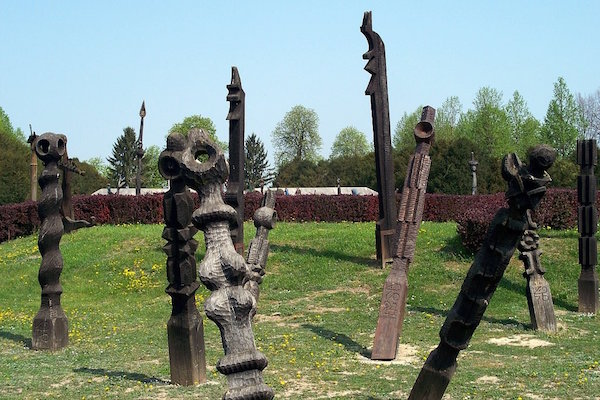
From the hill, after I’d taken a few pictures, my daughter got bored, and we had to leave. But not before I looked north: the Hungarian border was fewer than 10 kilometers away; the hills of Budapest 200 kilometers distant.
Just north across the Hungarian border lies another battlefield, Mohács where, in 1526, the Ottomans under Suleiman the Magnificent shattered the Hungarian army, and consigned the area to nearly two centuries of Turkish rule. That battlefield, adorned with wooden statues, spikes, and chain mail monuments, is the most chilling battlefield site I have ever seen. Here on a hill where countless thousands died in 1945, and hundreds more 45 years later, a chill rose up my spine in spite of the Indian Summer day. Time to go.
Besides, I had my real objective, booze, to think about. As we drove down from Batina Hill, there were plenty of small vineyards belonging to private vintners who sell cheap wine without sulfites, the kind where a liter with a meal brings on a pleasant buzz, but no headaches or morning-after regrets. Ever since living in Greece, where the kavas sell cheap sulfite-free wine, I have been hooked. (It is one of the hardest things for me about being in America: nowhere can I find good, local, natural hima wine.)
Forgive the digression: as we did not find any hilltop vineyards open or particularly welcoming, we drove into the next town, Draz, where I pulled the car to the roadside, and asked a passerby in overalls where to buy wine. “Gimme a sec,” he said, as he pulled his mobile phone from his thigh pants pocket. Shutting the phone, he said, “It’s fixed: someone will be here for you in five minutes.”
In America that would have sounded like an illicit deal, but here it was all perfectly innocent. Noting my accent, he asked where I was from. “Greece,” I said, “but I live across the river, in Serbia.” He told me how much he loved Greece, which is not particularly common in Croatia, as they know the Greeks’ affinity for the Serbs. He then offered me his hand, and I noticed that his wedding ring, like mine, was on his right ring finger, in the Orthodox fashion.
“Yes, I am Serbian,” he said, with a sigh that spoke volumes.
“Five minutes” is interpreted liberally here, where Southern Europe borders Central Europe but, after almost half an hour, a fellow approached and introduced himself. I had by then parked my car, and my daughter and I followed him into Draz’s municipal office . . . to meet the mayor.
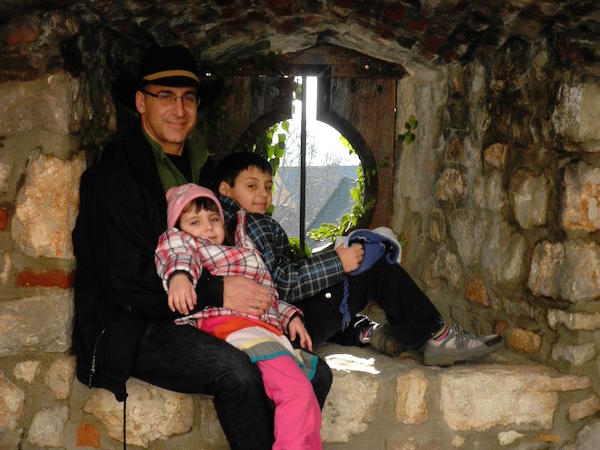
The mayor of Draz had none of the self-importance and officiousness I had found typical among Balkan bureaucrats. He finished up a call, stood and, after quick handshake, offered me Turkish coffee, adding with a frown that he did not have chocolate for the “lovely young lady accompanying me.” It turned out that the mayor owned a small vineyard and he would be happy to drive me there to sell me some wine.
We set off to his podrum (wine cellar), built into a hill, which was a perfect cool temperature even though the midday sun was directly above us. The whitewashed, vaulted cellar looked at least two centuries old, and there is every evidence that the people here had been doing essentially the same thing, in the same way, since the Romans brought the vine here over two millennia ago. I sampled a white and, for the Croatian equivalent of $15, set off with 10 liters of light blond wine, just slightly redolent of my favorite Greek blond, retsina.
Before I left, the mayor washed out two glasses and poured us a real drink. Toasting, he looked across the river, into Serbia: “My wife, she was born over there, in BackiBreg [a village near the border with a large Croatian population].” I mentioned my treatment at the border, and he said, apologetically, “They are not people from this area, but elsewhere, and they don’t know our traditions here.” In his voice, there was a sadness. He was old enough to remember that this river had once been something that had united people, as opposed to dividing them.
On both sides of the river, there were Catholic Croats and Orthodox Serbs, and a smattering of Hungarians. Serbia retains that mosaic, while in Croatia, the mosaic is shattered, and Serbs are far fewer than in the past. The sadness and silence of the mayor seemed to speak to it, and the quiet beauty of the place on a beautiful fall day remains with me, both as a promise of hope for the future, as well as a warning.
![]()
Note: The first image derives from http://limescroatia.eu/gallery/01_batina_07_dsc01356-2/; the photos of Batina from Bezdan were taken by Alet Lourens, a South African expat living in Serbia; the photo of the Mohács battlefield derives from http://www.panoramio.com/photo/26231056; the final family photo of Alexander, Helena, and John Billinis was taken by Vilma Billinis at Siklos Castle, Hungary, Spring 2013.
![]()
To buy Alexander Billinis’ latest book, The Eagle Has Two Faces: Journeys Through Byzantine Europe, click on the cover below:
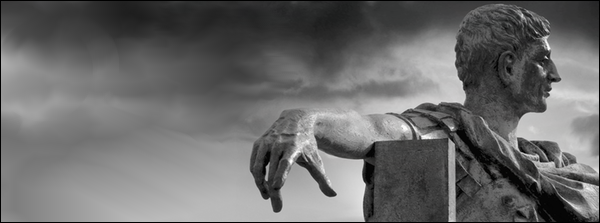
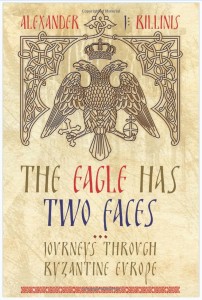
4 Comments
Jean Nolan
My goodness, Alexander, what a lovely piece of prose. As you note in your closing, this is an essay both tender and melancholy, hopeful and a little scary. Thank you for educating, however late, a Midwestern American on the beauties and the scars of the region known vaguely, (I reveal my own ignorance), as “the Balkans.” The photos are wonderful, but it is the difficult idea of having lost neighborliness with the folks across the river that saddens me, and I fear will stay with me. That said, your children are breathtaking! Thank you so much for writing with such heart and such knowledge about a place with which few of us are familiar.
Alex Billinis
Jean, you are so kind, yes my kids are dears, my joys. I enjoyed the area, its riddles, and history both hidden and that hidden in plain sight, but I fear greatly for its future, and because I want my kids to have a future, we left before the memories could go bad.
diana
what a bitter sweet story, beautifully told, Alexander. Welcome aboard the Weekly Hubris.
Alex Billinis
Diana, great to be in such great and cerebral company.